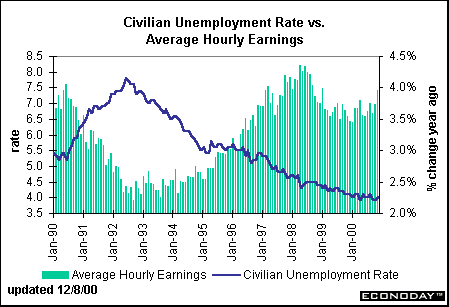The civilian unemployment rate edged up to 4.0 percent in November - but remains at levels last seen 30 years ago. At 4.0 percent, the yearly rise in average hourly earnings has posted its largest yearly gain in nearly two years. This could be a cause of concern for Fed officials who are worried about wage pressures.
Long Term Perspective
Pool of Available Labor • Nonfarm Productivity • Treasury Yields • Stock Prices • Humphrey-Hawkins Actions |
|||

